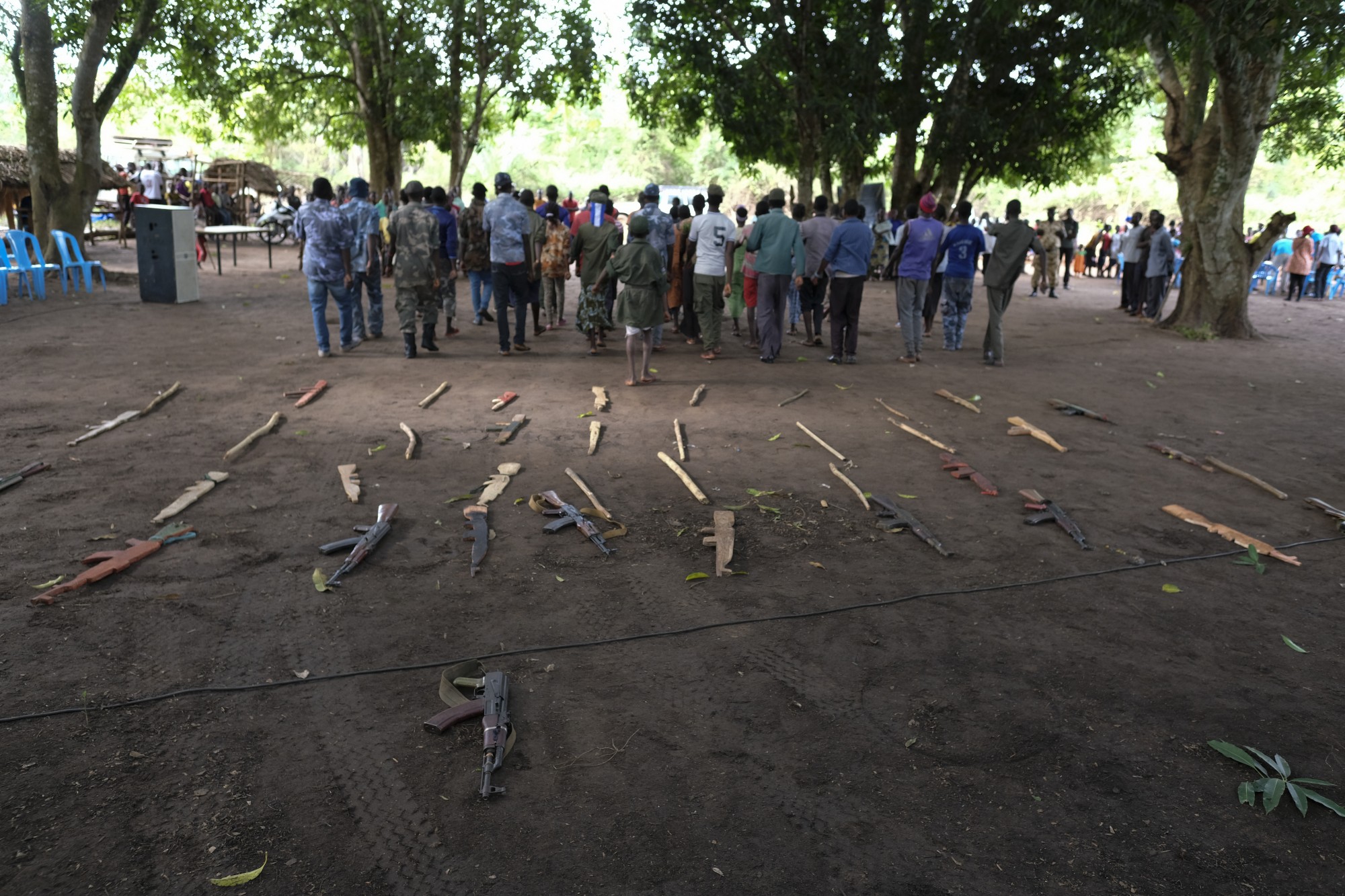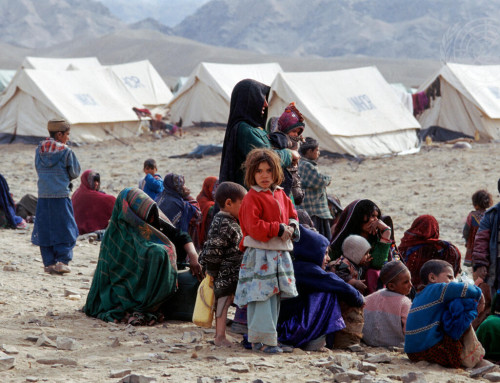How many child soldiers are there in the world?
Tens of thousands of boys and girls are recruited and used as child soldiers by armed forces and armed groups in conflict in countries around the world.
The United Nations monitors who and where children are recruited around the world. The Secretary-General names parties to conflict who recruit and use children in his annual report on children and armed conflict.
There are currently 55 parties to conflict identified and listed by the Secretary-General because the UN has documented patterns of recruitment and use of child soldiers.
What is it like to be a child soldier?
There are many ways for children to become associated with armed forces and groups. Some children are abducted and beaten into submission, others join military groups to escape poverty, to defend their communities, out of a feeling of revenge or for other reasons.
Their tasks can vary, from combatants to cooks, spies, messengers and even sex slaves. Each year, the UN receives reports of children in some cases as young as 8 or 9 years old associated with armed groups.

Click on the picture to read the story of Junior Nzita Nsuami, former child soldier from DR Congo. Photo: Junior Nzita Nsuami
No matter their role, child soldiers are exposed to acute levels of violence – as witnesses, direct victims and as forced participants. Some are injured and have to live with disabilities for the rest of their lives.
Girls are also recruited and used by armed forces and groups. They have vulnerabilities unique to their gender and place in society and suffer specific consequences including, but not limited to, rape and sexual violence, pregnancy and pregnancy-related complications, stigma and rejection by families and communities.
Are current conflicts affecting children differently?
Children have become more vulnerable due to new tactics of warfare, the absence of clear battlefields, the use of tactics of extreme violence, the increasing number and diversity of armed groups that add to the complexity of conflicts and the deliberate targeting of traditional safe havens such as schools and hospitals.
Of growing concern is the use of children to carry or plant explosive devices. In the past few years, we have witnessed an increase in the use of child suicide bombers.
The detention of children is another concern. They can be detained because of their alleged association with an armed group, or because they have allegedly participated in hostilities. Instead of being considered victims of the adults who recruited them, children are considered security threats. When children are arrested, they are too often detained without due process, for long periods of time and in contravention of international standards applicable to juvenile justice.
What happens to child soldiers after their release?
Reintegration is an essential part of the work to help child soldiers rebuild their lives.
Within the UN system, UNICEF is in charge of the reintegration of former child soldiers and their first priority is to prepare them for a return to civilian life. Psychosocial support, education and/or training are important aspects of the reintegration programmes. Attempting to reunite children with their families and communities are also essential, but sensitization and reconciliation efforts are sometimes necessary before a child is welcomed back at home.
The reintegration of former child soldiers is a long process and the Special Representative has launched together with UNICEF the Global Coalition for Reintegration of Child Soldiers in September 2018. The initiative aims to bring attention to the issue of reintegration of former child soldiers and encourage action to sustainably address support for child reintegration programs. By helping children deeply affected by conflict, we contribute to building a peaceful future for their country.
Watch the story of James, child soldier at age 13, South Sudan. Produced by UNMISS Media.
What can we do to end the recruitment and use of child soldiers?
Over the past 25 years, the world has come together to denounce and take action against the recruitment and use of children in conflict.
The mandate of the Special Representative of the Secretary-General for Children and Armed Conflict was created in 1996 by the UN General Assembly following the publication of Graca Machel’s report titled the “Impact of Armed Conflict on Children” . The report highlighted the disproportionate impact of war on boys and girls and identified them as the primary victims of armed conflict.
Since then, the protection of children has been firmly placed on the agenda of the United Nations highest bodies, and countries around the world have become involved and strong supporters of measures to improve the protection of children affected by war.
The Optional Protocol to the Convention on the Rights of the Child on the involvement of children in armed conflict, adopted in 2000, is another important tool to end the recruitment and use of child soldiers. The protocol, now ratified by a majority of the world’s countries, establishes the minimum age for recruitment in conflict at 18.
Can you tell us more about the work of the Special Representative?
Her role is to work with as many partners as possible and to use every opportunity to improve the protection of children affected by war. To do this, she supports the work of the UN to engage in dialogue with the parties to conflict listed by the Secretary-General in his annual report on children and armed conflict with the goal of ending violations committed against children.
 In 2014, the Special Representative launched the campaign “Children, Not Soldiers” with UNICEF to bring about a global consensus that child soldiers should not be used in conflict. The campaign was designed to generate momentum, political will and international support to turn the page once and for all on the recruitment of children by national security forces in conflict situations.
In 2014, the Special Representative launched the campaign “Children, Not Soldiers” with UNICEF to bring about a global consensus that child soldiers should not be used in conflict. The campaign was designed to generate momentum, political will and international support to turn the page once and for all on the recruitment of children by national security forces in conflict situations.
At the time of the launch, the countries concerned by the campaign were: Afghanistan, Chad, the Democratic Republic of the Congo, Myanmar, Somalia, South Sudan, Sudan and Yemen.
The campaign has now ended, but the consensus envisioned is now a reality and thousands of child soldiers have been released and reintegrated with the assistance of UNICEF, peacekeeping and political missions, and other UN and NGO partners on the ground.

Building on the success of Children, Not Soldiers, the Special Representative launched in 2019 the campaign ACT to Protect children affected by conflict, in an effort to draw attention to all six grave violations against children. The campaign ended in December 2022 and has been launched in New York, Bangkok, Brussels, the Central African Republic (CAR), Mali, Somalia, South Sudan, and Yemen.
The challenges we face are enormous, but by continuing to work together, we can make a difference in children’s lives and get closer to our goal of ending the recruitment and use of children in conflict.




